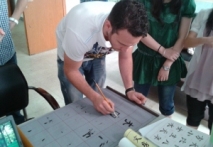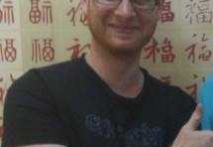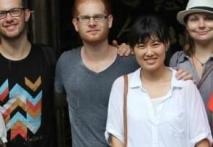Latest News
- Wuxi's Nanchang Street--a historic cultural district that combines classical charm, delicious food, and fun activities
- chinese study
- lastest courses
- Business Assistance/International Consortium of Stem Cell Research
- Foreigner's view of Jiangsu -Changzhou Jintan starts
- estimonials for Our new French Internship student Anais 企业表扬信
- The Double Seventh Festival in China Introduction
- Chinese Proficiency Test (HSK)
- China University Mining and Technology
- Wuxi Library
Students Say
Mandarin Student Zack
Mandarin Education School is a great place to learn Chinese and Chinese Culture.I've learned a lot in this school, my Chine...
Learn Chinese Travel China
If you want to learn Chinese and also discover China, Mandarin Education organize the most funny and cultural study tour.
The...
suzhou Mandarin Jude
I am Jude, I am learning Mandarin in Suzhou Mandarin School,I was learning in Wuxi Mandarin Education too.I like my Chinse Teacher...
chinese class
Improve your reading, speaking and your writing by experiencing our teaching methods,Offer free student Visa.
...
Wuxi Mandarin Jessie
I've learned Chinese for almost 8 years, I can understand what Chinese people say,but when I speak, I feel very uncomfor...
Chinese Internship or Jobs
You are looking for a professional experience abroad? Get the opportunity to discover the Chinese business,Look for an ...
Mandarinedu Student Florent
I love my Wuxi Mandarin Education School. It is the EASY MANDARIN Learning way, I am learning faster than I wanted.My teach...
Mandarin E Learning
Mandarin Education School offers you Online Chinese Courses. It has never been so easier to have Chinese courses ...
Mandarin Student Brad
I am studying Chinese in Mandarin Education School. I can speak quit good Chinese and talk to Chinese people by myself. Thank...
Wuxi Mandarin edu. Student Jennifer
I love learning Chinese in Mandarin Education School.That's a great place to learn and make friends.
...
Add Our School Official
to get more informations

0086 1866 1199 988
0086 510-81151808
Sandy.Swun
519988808
Mandarin Education School
Room 405, 4 Fl,Building No.8,
Maoye Business Center,
Chang jiang No.1,
New district , Wuxi City , China
10 Forbidden City Facts You Should Know
China's most glorious palace sits in the heart of the capital city of Beijing. As one of China's largest and most well-preserved heritage sites, the Forbidden City is a must-see for all visitors to China.
It is considered to be among the world's top 5 most important palaces of all time, and is China's most popular single-site tourist attraction. Read on for the top facts pertinent to tourists.
Chinese name: 故宫Gùgōng /goo-gong/ 'Formers Palace'
1. The Forbidden City is the world’s largest imperial palace.
The Forbidden City occupies 720,000 sq. m (7,750,000 sq. ft), over three times larger than the Louvre Palace in France. An estimated 1 million laborers worked to complete the structure.
It has more than 90 palace quarters and courtyards, 980 buildings and over 8,728 rooms. (A common myth states that there are 9,999.5 rooms, but it is not supported by survey evidence.)
For a size comparison, the Vatican measures 440,000 square meters, and the Kremlin measures 275,000 square meters. The impressiveness of the size and scale of this ancient fortified palace is not to be missed.
You will be unable to appreciate all the palace quarters even you spend a full day there. Our insider’s guide will help you to plan your trip.
2. The Forbidden City is a masterpiece of Chinese architecture.
The Forbidden City is the world's largest collection of well-preserved medieval wooden structures.
Apart from the magnitude of the complex, the detail of the architecture is also astounding. Every detail reflects features of traditional Chinese architecture and rich Chinese culture.
For example:
Except for Donghua Gate (‘East Glory’ Gate), all gates in the Forbidden City are decorated with a nine-by-nine array of gilded door-studs. Nine implies supremacy and eternity in Chinese culture.
Rows of auspicious animal statues, such as dragons, phoenixes, and lions, were placed along roof ridges of the important halls to invoke prosperity and good fortune.
3. The majestic Outer Court has no trees.
The Forbidden City is composed of a ceremonial Outer Court and a residential Inner Court. You can find many trees in the Inner Court, but no trees in the Outer Court.
There is no universal conclusion as to why there are no trees in the Outer Court. However, there are two main theories:
a. As the Outer Court was where solemn public ceremonies were held, and the emperors’ “supreme godly power” and imperial dignity were displayed, no trees were allowed, as they would overshadow or disrupt the majesty of the atmosphere.
b. A lack of vegetation would give assassins nowhere to hide, and clear lines of sight for defensive purposes.
4. The Forbidden City was home to 24 Chinese emperors.
Emperor Yongle, third of the Ming Dynasty, began its construction in 1406 and the complex was completed in 1420. 14 Ming emperors held power there until the Manchus took possession in 1644 and moved the capital to Shenyang for a few months.
The Qing Dynasty soon moved the capital back to Beijing and the Forbidden City. 10 Qing emperors ruled from there until the abdication of the last emperor in 1912, at the creation of the Republic of China.
5. The Palace Museum is one of the world's largest cultural museums.
The Forbidden City, a.k.a. the Palace Museum, is home to the best collection of Chinese historical artifacts in the world. Collections span thousands of years of Chinese history and it’s considered one of the best museums in the world. It's top of China's top 10 museums list.
Visitors can see a stunning array of ancient treasures and buildings while touring the complex. Ancient porcelain and jade, gardens, courtyards, and relics of historic significance for China and the world feature prominently. For more see The Top 10 Treasures in the Forbidden City.
6. Part of the museum's former collection is in Taiwan.
In 1933, some national treasures in the Forbidden City were evacuated to preserve them from the threat of Japanese invasion. After the end of World War II, some of the collection was returned, but some is now housed in the National Palace Museum in Taipei.
7. The Forbidden City is China's most popular single-site tourist attraction.
Due to its cultural significance and unique beauty, the Forbidden City is extremely popular with both Chinese and foreign tourists. The palace museum boasts 14 million visitors annually, more than any single section of the Great Wall.
These overwhelming numbers often make for extensive lines, particularly on national holidays and weekends. The Chinese government is working hard to ensure the constant flow of visitors is well-regulated, and to prevent harm to the ancient buildings by the large crowds.
The palace is considered a must-see for everyone lucky enough to visit Beijing.
8. 40% of the Forbidden City is still forbidden access.
The Palace Museum is already large enough for you to spend over a day exploring. Can you believe that’s only the 60% that’s currently open to the public?
An overall repair of the Forbidden City is underway and planned to finish by 2020. Over 80% of the palace is expected to be open to visitors at the end of 2018.
9. A Forbidden City trip is not complete without a visit to Jingshan Park.
You can enjoy a hilltop view of the whole complex.
If you want to see how large the Forbidden City is, pay a visit to nearby Jingshan Park, where you can enjoy a hilltop view of the whole complex.
Jingshan Park is a few minutes’ walk from the Forbidden City exit — a perfect end for your tour.










